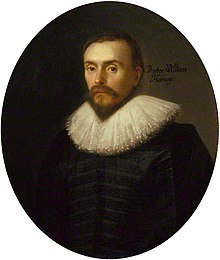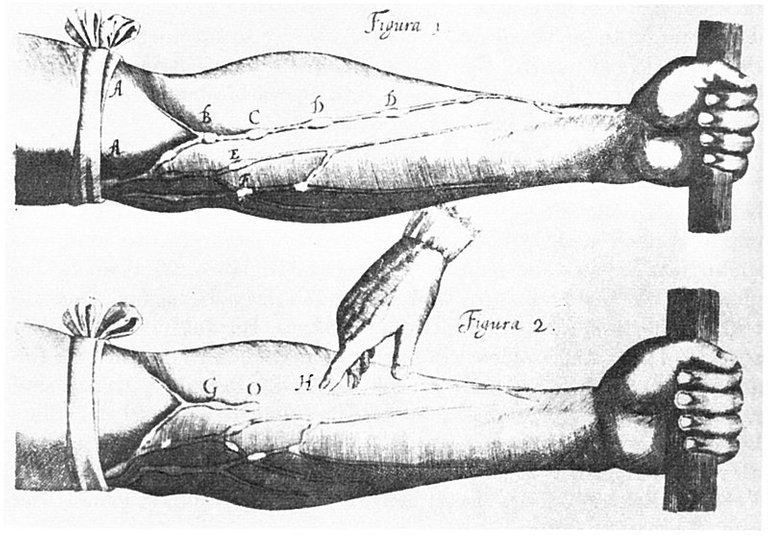William Harvey's experiments, how he discovered blood circulation | SCIENCE

William Harvey is and will always be remembered for his contributions to medical science. He showed the world a magic in the 17th century that made him immortal in history. Today we will learn about his famous discovery of complete blood circulation and experiments on this subject which is very exciting. William Harvey was born on April 1, 1578 and died in London on June 3, 1657. He began his studies at the King's School in Canterbury, Kent in 1588 and remained there until 1593. Studied arts at Gonville and Caius College, Cambridge, from 1593 to 1599, while studying medicine, earning his doctorate from Padua in 1602. After his studies, he started his career as a doctor.
Each person is interested in different subjects such as William Harvey was more interested in the mechanics of blood flow in the human body and focused most of his research on it. Doctors of the time had a lot of misconceptions about blood circulation, such as thinking that the lungs were responsible for moving blood throughout the body. But William Harvey proved them wrong and opened new doors to the treatment.
William Harvey examined the blood circulatory system and published his research in 1728 in his book "Exercitatio Anatomica de Motu Cordis et Sanguinis in Animalibus". It is a famous book that was first written in Latin. Later this book is translated into English which you can download and read from now "On the Motion of the Heart and Blood in Animals" here. Harvey was only 50 years old when he wrote this book.

During his experiments, William Harvey tied a strong ligature to a man's upper arm to cut off blood flow from arteries and veins. After doing so he noticed that the arm below the ligature had become cold and pale. He also noticed that the top of the ligature was warm and swollen. Then William Harvey loosened the ligature slightly to allow blood to flow from the artery to the arm. Because arteries are deeper in the flesh than veins, he noticed the opposite effect in the lower arm. This part of the arm was also warm and swollen. He also saw the veins as more numerous and clear because they were full of blood.
After this, William Harvey could see small bumps in the veins of the arm. Then he remembered his teacher Hieronymus Fabricius. He realized that the venous valve was invented by his teacher. After that, he tried to push the blood in the lower arm vein but could not. Again he tried to push the blood up the arm and found that it came off easily.
He did the same experiment on the jugular vein and other veins of the body and he saw the same effect. But other veins are different because veins do not allow blood to flow upwards but downwards. From this characteristic of the veins, he understood that the veins carry blood to the heart and the valves maintain a one-way flow.
William Harvey was convinced by his observations that there was no need for a direct connection between veins and arteries. He understood more definitely that the blood enters the pores into the flesh and is absorbed and assimilated from every part by the veins.

He observed the concept of the heart in living organisms and found that muscle contraction pumped blood as we know it so well today. The amount of blood ejected from the heart was much greater than the amount of blood absorbed by the tissues. He realized that the valves in the veins allow blood to flow only towards the heart. Blood circulates around the body and returns to the heart. This may sound like the blood circulation summary to you.
William Harvey showed by his experiments that the pulsation of the ventricles causes the blood to flow through the lungs and the heart. This blood is pumped throughout the body. Blood in the animal body is continuously circulated in a circle by the pumping of the heart. This pump action is the only reason for the speed and beat of our or animals' hearts
References :
https://www.britannica.com/biography/William-Harvey
https://www.ncbi.nlm.nih.gov/pmc/articles/PMC2776239/
https://www.thebloodproject.com/william-harvey-on-the-blood/
https://en.wikipedia.org/wiki/William_Harvey
Thanks for reading
Best regards

Your post is interesting, @momins, but beware of "article spinning". Borrowing a paragraph from several sites and then rephrasing it slightly qualifies as article spinning and that cannot be supported. I've hinted at this in the past. I hope that being clearer will help.
This was a historical post, I didn't want to distort the facts. Not spinning, the sentences are changed from the original data where you can see my own sentences. I consider the posts that have Google rank are written in almost the same way. Wikipedia does that too, maybe I'm wrong to follow them. I actually made a technical mistake in writing. From now on I will only share my own thoughts and if any information is needed I will seek help from sources. Thanks for your support. Now I understand what I asked you earlier. Thank you for clarifying that.
Yes, let's avoid article spinning. As I said, borrowing at least one paragraph from several sources and then rephrasing it slightly, without significant additional, personalized value is pretty much the same thing. It may be better to redirect the reader to that source instead.
Glad to help.